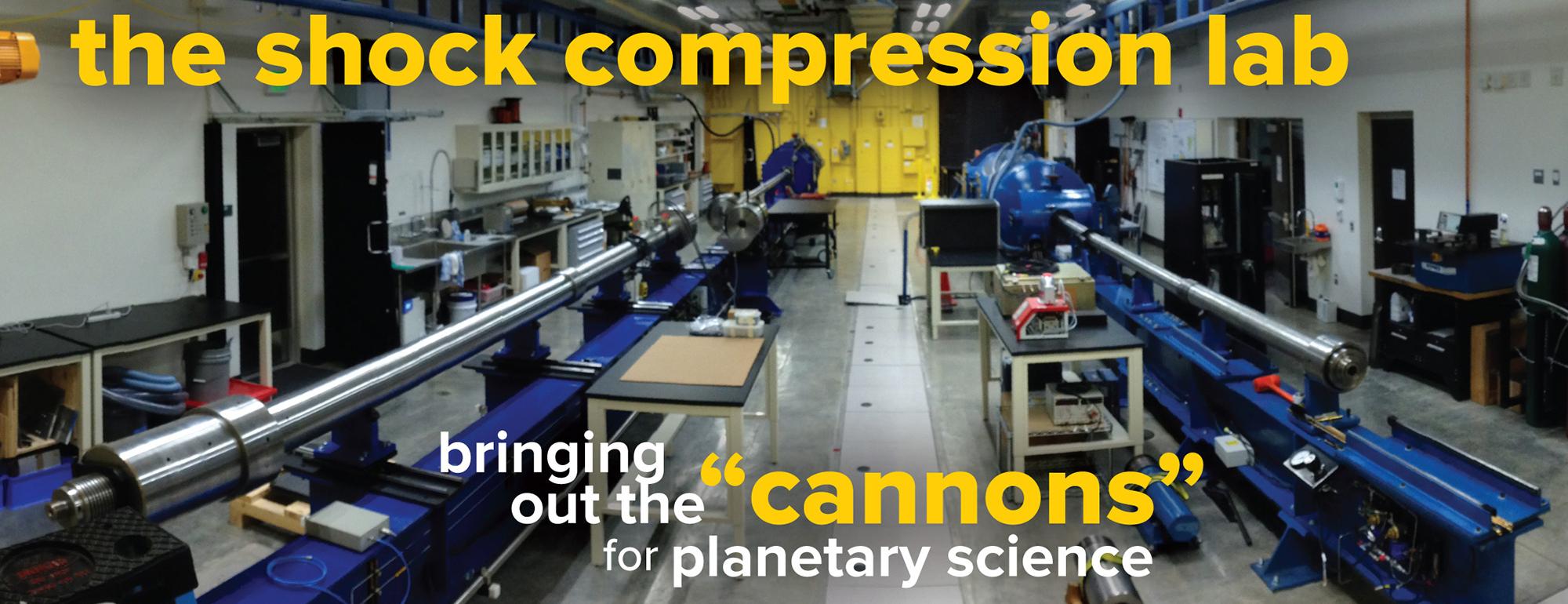In the fall of 2016, Professor Sarah Stewart’s group took possession of the department’s newest – and largest – experimental facility constructed adjacent to the former location of the Geology Department (the Physics/ Geology building). Stewart’s group uses a combination of experimental and computational approaches to explore feedbacks between material properties and physical processes during planetary formation and impact events. Their new lab is one of very few in the world dedicated to using shockwave experiments to study the properties of rocks and minerals under conditions of extreme pressure and temperature. Using the lab’s two cannons (or “light gas guns”), the group can achieve conditions comparable to those of the Earth’s core and characteristic of those encountered during large impact events or during planetary accretion. The results help map out physical and thermodynamic properties of planetary materials in regimes far beyond those familiar to the traditional petrologist. These experimental results are critically important inputs for computational models of planetary collisions, including recent work on the origin of the Earth and Moon.
Various static compression techniques have been well developed for experimental petrology, covering the range of pressures traditionally of interest for the crust and upper mantle (e.g. multi-anvil press or diamond anvil cell). Dynamic compression techniques, including shock compression, permit exploration of a tremendous range of temperatures and pressures up to many millions of atmospheres and several thousand degrees Kelvin. In a typical experiment, gunpowder and/or compressed gas are used to launch a metallic projectile at speeds as fast as 7 to 8 km/sec. The projectile collides with a stationary sample, generating a strong shock wave which compresses and heats the sample material. A suite of optical diagnostics and electromagnetic gauges on or within the sample track the pressure history and temperature as a function of time, allowing Stewart’s group to recreate the extreme conditions of a giant impact or deep planetary interior in the lab. Details about phase transformations, rheology and transport properties (e.g. conductivity) can also be gleaned from such experiments and, in some cases, samples can be recovered for post-shock analyses using traditional bench techniques.
Although large cannons are not the first instrument to come to mind for most geologists, the science that they enable is broad. The lab contains two ‘light gas guns’, suited for different types of experiments and which access different conditions. The gun on the right (above photo) was relocated from Stewart’s previous lab while the one on the left is a new addition that roughly triples the range of accessible pressures and temperatures. Stewart’s group has examined magnetic effects in shocked materials, phase changes in ice and the effects of impacts on the volatile content of clays. More recently, the group has focused on measuring melting and vaporization in mantle minerals and has found that vaporization in large impacts has generally been underestimated, with implications for geochemical evolution during accretion. Armed with a more complete understanding of the physical and chemical outcomes of large collisions, the group has also recently proposed a new twist on the formation of the moon, in which the Earth-moon system evolves from a transient ‘donut-like’ structure composed mostly of rock vapor which they term a ‘synestia’. The new structure may help explain observed chemical differences between the present-day Earth and moon. Indeed, understanding how collisions modify the end-state of planetary evolution is a key theme for Stewart’s group, whose future work will more deeply explore the chemical implications of such events and even what constraints may be required to form a habitable planet.
Given the Shock Compression Lab’s unique capabilities and the broad range of applicable science, Stewart’s group has expanded their collaborations since she joined the faculty in 2014. The lab is part of a recently funded University of California Center for Frontiers in High Energy Density Science, maintains active collaborations with the national laboratories to study problems in fundamental materials science and will soon begin work with the Simons Collaboration on the Origins of Life. The lab serves as a unique resource for UC Davis students to do hands-on experimental research in planetary science and the group welcomes inquiries from aspiring geologists, physicists and engineers who agree that a cannon sounds like just the thing for exploring processes in the early Solar System.
For more information on Sarah Stewart's research, visit sarahtstewart.net
Dylan Spaulding joined the department as a project scientist in 2016. He received his Ph.D. in planetary science and shock physics from UC Berkeley and was previously an Origins Initiative postdoctoral fellow at Harvard University.



